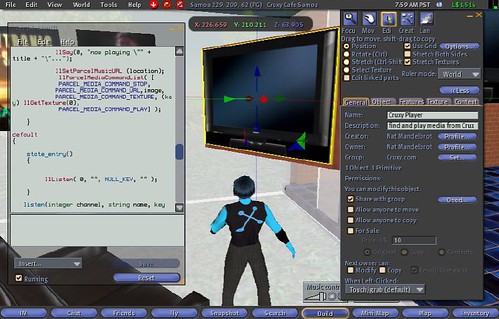As a small to medium-sized media company with a large catalog of digital media, finalizing a technology strategy to allow wide online distribution is a critically important task. It can also seem a daunting one. Vendors and potential partners are likely knocking on the door, each bringing a unique view of the technology problem and how their service or product can solve these needs. Consumer pressure also abounds, as each passing week sees new tools and portals for online media consumption. Certainly, Content Delivery Network (CDN) vendors, bandwidth providers, and full-services media-oriented solutions are in the mix. How should a small to mid-sized media distributor proceed?
A Sea of Solutions
The recent rise in the number of services available to the consumer, the semi-professional artist, and even to the media company directly has been significant. There are currently dozens of solutions that can meet various needs within the media distribution space. There are also any number of internally-deployed systems and infrastructures to handle the distribution tasks. We have observed a number of common pitfalls when medium-sized media outfits tackle this landscape, especially when the unit functions under a larger corporate ownership umbrella:
- Corporate-wide, large-scale, all-or-nothing partnerships typically, especially in the highly competitive environment facing today’s media enterprises, leave no room for market testing and fail much more often than they are successful.
- Group-by-group expirementation with consumer tools, while in most cases not harmful, usually is not quantifiable in terms of return. Creating a MySpace page, because it seems like the thing to do, and then collecting friends is not a standalone distribution strategy.
- Internal technology efforts become mired in the internal workings of a large corporation, one which is not necessarily a technology corporation.
Flexible Experimentation is Key
The number of large-scale distribution programs that have launched, and subsequently failed, in recent years and months is often staggering. It is our belief that for the majority of small to medium-sized media companies, an effective strategy rests on the ability to experiment within campaigns. In a lesson taken from modern software engineering practices, an iterative strategy can often prove highly effective for a number of reasons:
- By reducing internal cycle time and overhead, you can get in front of niche consumers with innovative new promotional vehicles quickly, and build a reputation by doing so.
- By limiting the initial outreach to less-critical media properties, you can gain valuable insight on what works and what doesn’t, without risking the mission-critical properties.
- By spending less time on organization-wide analysis and coordination, you can focus on deploying the solution quickly and spending that time to analyze and understand its impact, strengthening your overall strategy with each new piece of knowledge.
- When it is appropriate to roll the strategy into a unified whole, potentially for use across all media properties, the insight and data obtained from the smaller-scale initiatives will be invaluable.
Given this, how can you adopt these types of flexible practices?
Recommendations
The challenge, then, becomes one of balancing the substantial capability made available by consumer-oriented services with the need to measure return and iteratively form the overall strategy through a series of learning exercises. To this end, we have found that often smaller technology firms with existing technology bases can offer a compelling solution during this phase of strategy development. Computing and data-serving platforms such as those available from Amazon (EC2 and S3) can greatly increase the robustness and speed of deployment for these solutions, allowing them to be offered as “for real” services for a fraction of the cost of large-scale CDN partnerships. The resources freed up by not involving a corporation-wide internal IT effort or large-scale partnership can then be put to use in gathering and understanding analytical data from these next-generation campaigns.
Over time, the value a media company can derive from a series of low-cost campaign deployments, in terms of strategic refinement, hands-on experience with the new technologies and user-interaction models, and avoiding costly and embarrassing mistakes, far outweighs that available from traditional closed-loop analysis.

